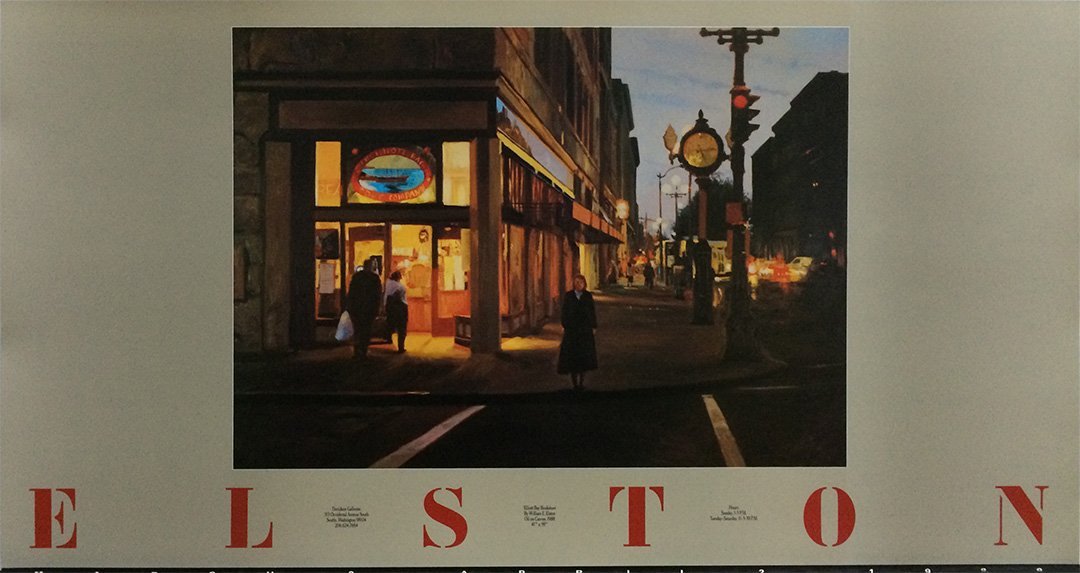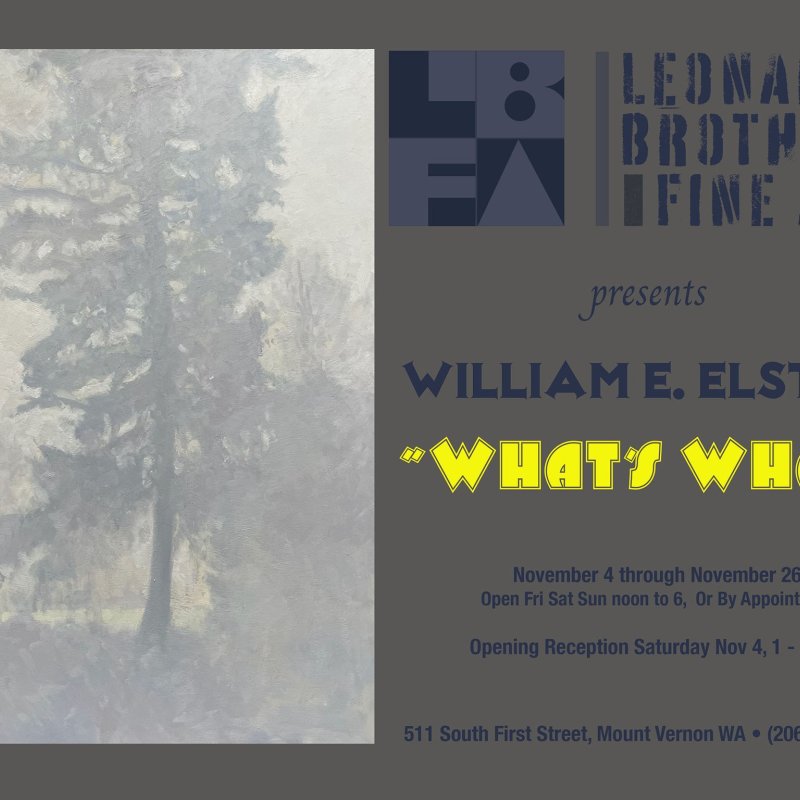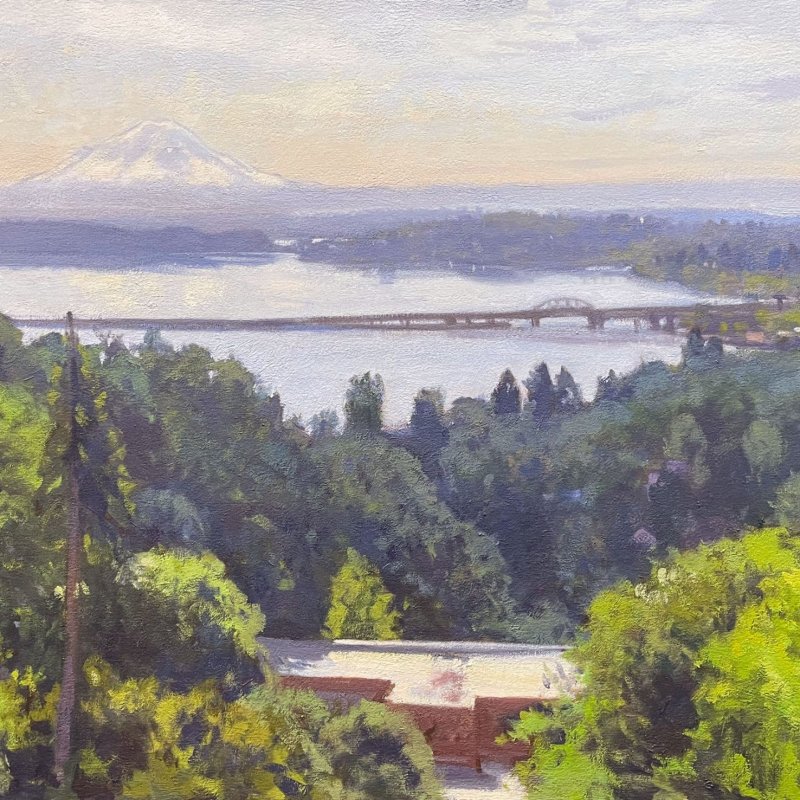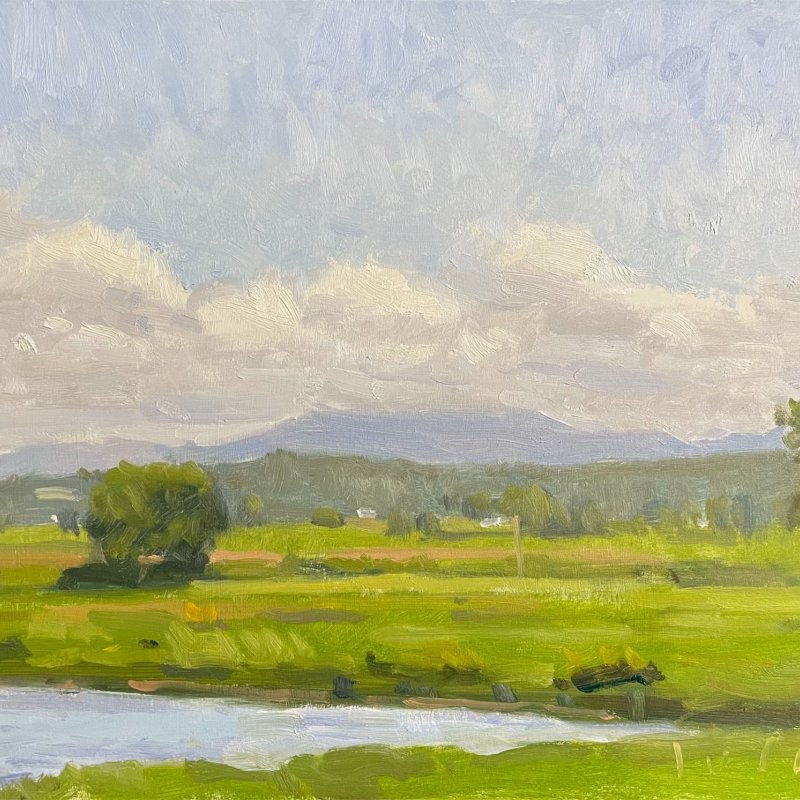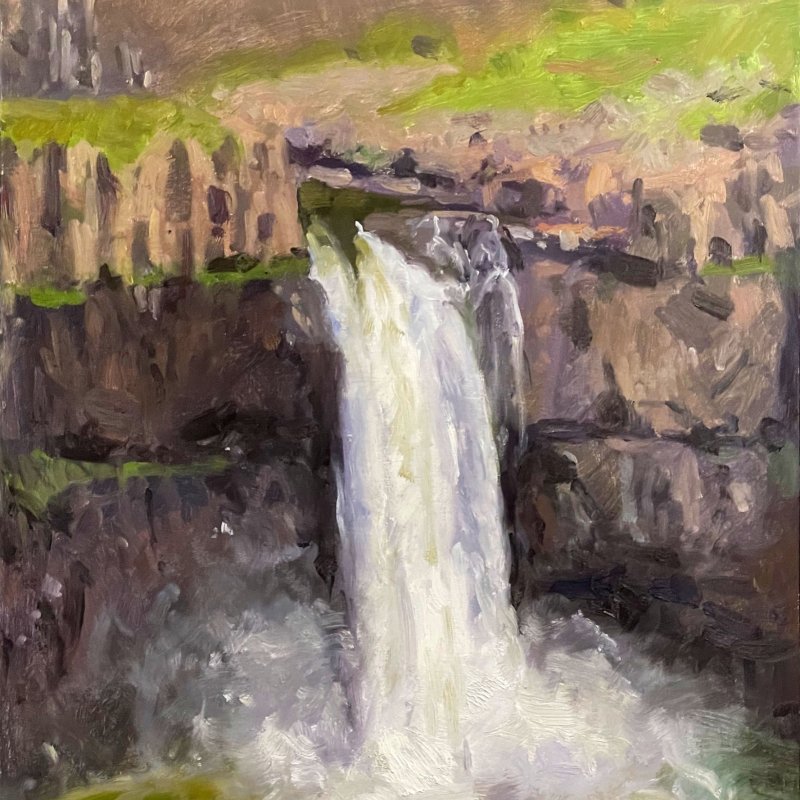An End to an Era
Author
William E. Elston
Published
Feb 23, 2014
Tags
 Recently the gallery that has represented me in the Pacific Northwest, Davidson Galleries, announced that they were phasing out their department of Contemporary Painting and Sculpture. I have been a member of their stable of artists for the better part of three decades.
Recently the gallery that has represented me in the Pacific Northwest, Davidson Galleries, announced that they were phasing out their department of Contemporary Painting and Sculpture. I have been a member of their stable of artists for the better part of three decades.
My first exhibition there was in 1989, and was a near sellout show. Over the course of many years, Davidson Galleries has placed my work in many important public and private collections. I will always be grateful to Sam Davidson for his efforts on my behalf.
When I first moved to Seattle, Davidson Galleries exhibited and dealt only fine art prints, both antique and contemporary. At that time they were located on Yesler Street, sandwiched between Manolides Gallery and the bookstore that was owned by Sam’s future wife, Elizabeth Donnelly. His associate director at the time was Kate Joyce, and it was her idea that he move to a larger venue and branch out into contemporary painting and sculpture. They soon moved to the current 313 Occidental Avenue South location. I was showing at Foster White Gallery at the time, but had a great deal of respect for Sam as an art dealer. I encouraged a friend of mine to apply there, and he was accepted and began to exhibit. Personnel changes at Foster White forced me to follow suit, and I applied for representation in 1987. Sam was agreeable, and almost immediately began selling work.
We scheduled my first show, and I began producing the work for it. One piece was a large, late evening urban landscape of Elliott Bay Book Company, and we persuaded its owner, Walter Carr, to publish a poster for the show. As the opening date neared I negotiated with some Jazz musician friends to play at the opening. These included John Bishop on drums, Chuck Deardorf on bass and Dave Peterson on guitar (a later lineup included Hans Teuber on sax.) These were some of the leading lights of the Seattle Jazz scene. The opening was packed, and really exposed a hunger for representational work within the audience for contemporary art in Seattle. As mentioned before, the work sold very well, and many works found a place in the homes of several important Pacific Northwest collectors.
Subsequent years had their ups and downs. Periodic national and regional recessions presented challenges to the Pacific Northwest arts community. A succession of young staff cut their teeth in Davidson’s gallery environment, and then moved on in pursuit of more specific arts administrative or other life goals. In the early 1990s the gallery decided to upgrade their computers. I had been exploring computers and networking at the time, and Kate Joyce asked me if I wanted to assist in their transition from a failing PC system to a Macintosh based network. I ended up setting up their network, procuring their computers, developing their database, training their staff and designing their first website, which at the time was the first commercial gallery website in the Pacific Northwest. After the first couple of years the website was moved in-house, and I helped train staff for that task. Over the years I’ve continued to manage their network, consult on IT matters and troubleshoot the gallery’s computer problems. These efforts have provided me with important supplemental income, always an advantage for an artist that relies on the sale of work for a living. But more importantly, this work has provided me with invaluable insight into the gallery and art business. It has increased my respect for the challenges that anyone involved in the business of art is up against, especially in regional markets.
In the late 1990s I hung my last exhibition at Davidson Galleries for the next several years. The highlight for me was the performance at the opening by two internationally known Jazz luminaries, the singer Jay Clayton, and trombonist Julian Priester. Jay was (and is) a good friend, and set up the gig for me. In many ways it harkened back to the late eighties and early nineties, when openings were treated as a celebratory event, an acknowledgement that this was the best we had to offer.
In the early 2000s I moved to another gallery, Woodside/Braseth. I had been wooed by John Braseth to switch galleries, and had friends that had been exhibiting there for a long time. I spent several years being represented by Woodside/Braseth, but missed Sam Davidson’s aesthetic and historical depth. These attributes did not always readily translate into the sale of artworks, something that John Braseth was very adept at. Although I appreciated John’s positive attitude and enthusiasm for art, I felt that Sam would be more successful at presenting a narrative context for my work, one that placed it within late 20th / early 21st Century Contemporary Figurative trends. I returned to Davidson Galleries in the mid-2000s, and we scheduled a show for 2008 at Davidson’s new satellite gallery, Davidson Contemporary in the Tashiro Kaplan building. The show was successful, we sold several large pieces, and I was offered a number of commissions. One of those commissions took me to Buenos Aires, Argentina, a life transformative experience and one that I will always cherish.
It has been a long run, a quarter of a century. There are too many memories to innumerate, and too many friends and influences to acknowledge. I could mention a few: There is of course Sam, around whom all of this narrative revolves; Kate Joyce, the associate director that presided over my first and many subsequent shows. Mike Sweney, now working for the Washington State Arts Commission; Cara Forrier Richardson, Emily Potthast, Tara Shadduck, Lisa Mehlin, and many others. I’ve shared drinks and locked horns with many of these staff members over the years, but appreciate all of their work. Rebecca McDonald deserves special mention for her steadfastness and clarity.
I wish Sam Davidson the best of luck for the future of his gallery in its new incarnation. In many ways I see it as a good move for him. The choice to focus on prints and works on paper addresses his core strengths. The Contemporary Painting and Sculpture Department at Davidson Galleries always depended on his ability to attract and hire competent and knowledgeable staff, and that is not always easy or possible. As for me, I’m going to spend some time assessing what my options are, and consider whether I believe significant gallery representation in the Pacific Northwest makes sense in this new digital age. The gallery system itself has had a run of just over a century, and I think that new models of networking, support and presentation of the art of our era are emerging. Let’s just say I’m open to suggestion.
Most recent articles
If you have an inquiry...
Please send a message.
Questions pertaining to acquiring works, enrolling in classes or workshops, or any related matters can be sent here. Gallery inquiries welcome.
